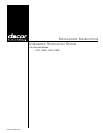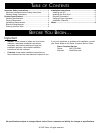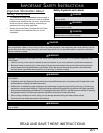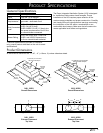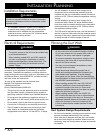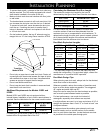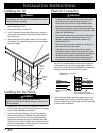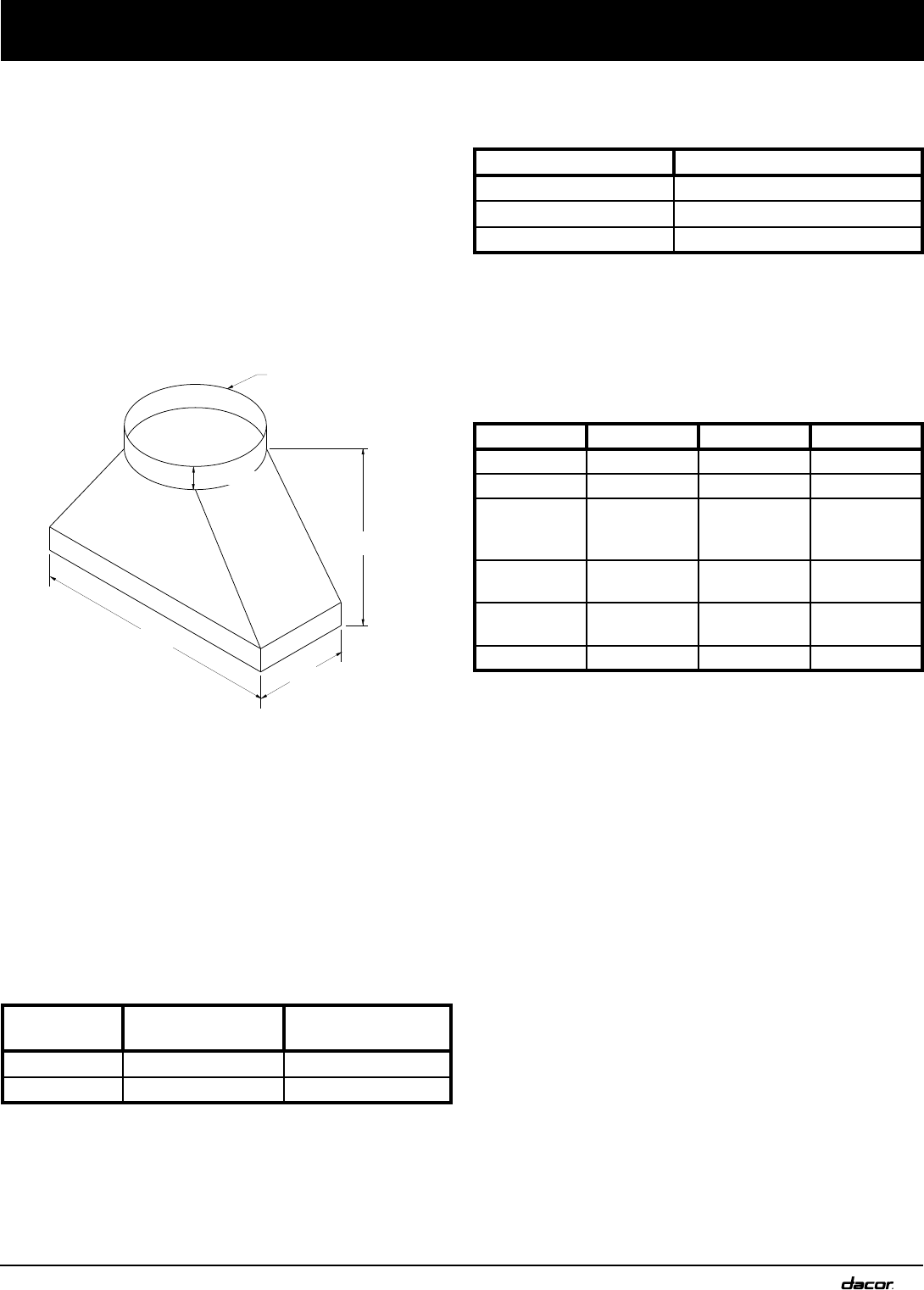
5
To prevent back-drafts, a damper at the duct outlet may •
also be required. The IVS comes equipped with a back-
draft damper installed in the collar of the unit.
Make sure duct work does not interfere with floor joists •
or wall studs.
The hood exhaust connects to a 8-inch round duct. You •
can increase the duct size over the duct run if desired.
To prevent a back draft, never decrease the duct size
over the run. If existing duct work is smaller than 8
inches in diameter, remove it and replace it with 8-inch
or 10-inch duct work.
On dual exhaust models, the two 8” exhausts may be •
merged into on 10” duct using Dacor transition ATD10.
Do not rely on tape alone to seal duct joints. Fasten all •
connections with sheet metal screws and tape all joints
with certified silver tape or duct tape. Use sheet metal
screws as require to support the duct weight.
Do not use flexible metal duct.•
Do not use duct work that is smaller in cross-sectional •
area than 8-inch round duct.
Additional Requirements for Models IVSR1 and
IVSR2:
Models IVSR1 and IVSR2 are not equipped with an
internal blower. Installation of an in-line or remote blower is
required. See the table below for the correct model number.
DUCT WORK
SIZE
IN-LINE BLOWER
MODEL
REMOTE BLOWER
MODEL
8-Inch ILB8 REMP3
10-Inch ILB10 REMP16
If installing an in-line blower (ILB8 or ILB10), it must be
located within 50 equivalent feet of the IVS.
In s t a l l a t I o n pl a n n I n g
21" (533mm)
8" (203mm)
13" (305mm)
10" Round
2" (51mm)
Transition
Model ATD10
Calculating the Maximum Duct Run Length
The maximum straight duct length for the hood is
determined by the type of duct used. See the chart below.
DUCT SIZE MAXIMUM DUCT RUN
8-Inch Round 60 feet
10-Inch Round 50 feet
3¼” X 10” rectangular 50 feet
For each elbow and transition added to the duct work,
a certain number of feet must be subtracted from the
maximum duct run to compensate for wind resistance. To
determine the length the duct work cannot exceed, subtract
all of the equivalent lengths of the elbows and transitions
listed below from the maximum duct run above.
Duct Work Equivalent Lengths
PIECE SUBTRACT PIECE SUBTRACT
8” 90° elbow 7 feet 10” 90° elbow 5 feet
8” 45° elbow 3 feet 10” 45° elbow 2 feet
3¼” X 10”
to round 90°
transition
25 feet
3¼” X 10” to
8”/10” round
transition
4 feet
3¼” X 10” 90°
elbow
15 feet
3¼” X 10” 90°
flat elbow
20 feet
3¼” X 10” 45°
elbow
7 feet
Wall cap with
damper
*
Roof cap *
* The equivalent lengths of roof and wall caps vary with
model and configuration. For equivalent length, contact the
manufacturer or a qualified HVAC specialist.
Duct Work Design Tips
When planning new duct work, always look for the shortest,
most direct route to the outside.
Wherever possible, reduce the number of transitions and
turns to as few sharp angles as possible. Two staggered
45° angles are better than one 90°.
Keep turns as far away from the hood exhaust as possible,
and as much space between bends as possible.
For best performance, use round duct instead of
rectangular, especially when elbows are required.
If multiple elbows are used, try to keep a minimum of 24” of
straight duct between them. Avoid “S” or “back to back” use
of adjacent elbows.
In regions where the weather gets extremely cold, use
thermal breaks, such as a short section of non-metallic
duct, to avoid indoor heat loss. Locate the break as close
as possible to the outside pass through point.



